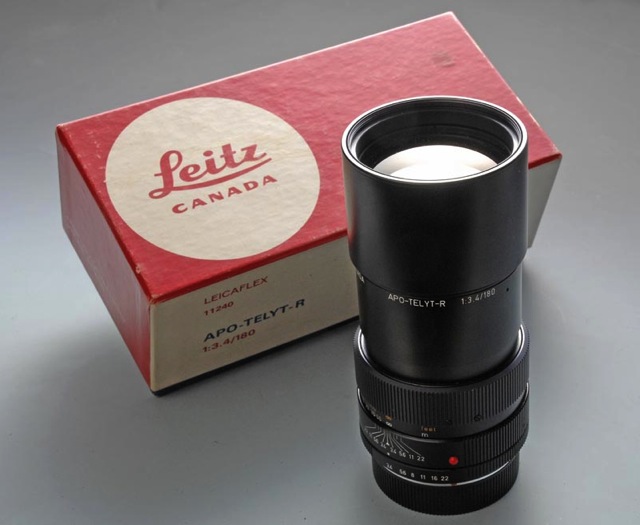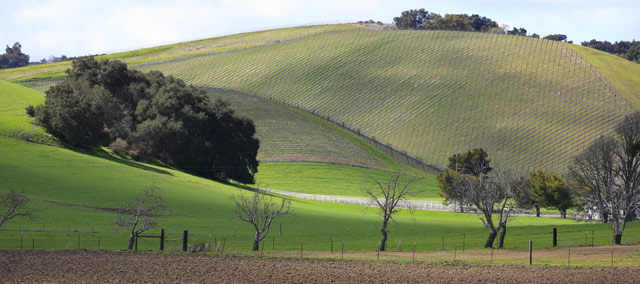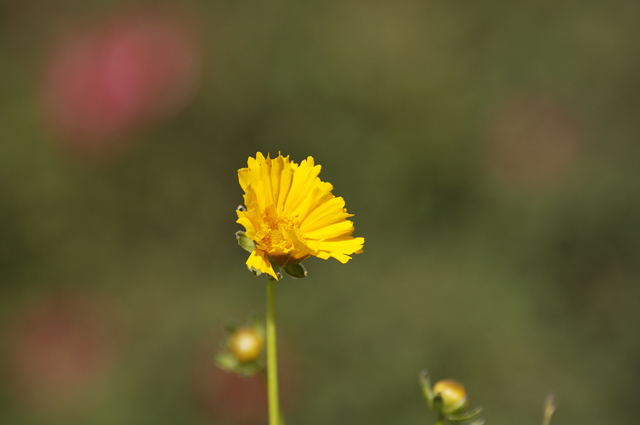Finally, a replacement for the magnificent Leica Apo-Telyt-R
Mention of the fabulous Leica Apo-Telyt-R lens in my column on the Leicaflex SL the other day prompts mention of its replacement which I have been using for a few weeks now on the Canon EOS 5D.
Available during the period 1975-98, the 180mm f/3.4 Apo-Telyt was one of the first Apochromatic lenses available for 35mm cameras, meaning there was no color fringing to be seen no matter how big the enlarged print. It was a surprisingly compact lens, weighing in at 1.65 lbs with its built in lens hood. Full aperture definition was as good as that at any other aperture, meaning superb, or as good as your ability to hold it steady.

The fabulous Leitz 180mm Apo-Telyt R
While cursed with yet another clunky lens hood (why on earth did Canon abandon the earlier sliding lens hood? Another Canon lens hood in the garbage can), the Apo’s replacement on the EOS 5D is Canon’s superb 200mm f/2.8 ‘L’ lens. The ‘L’ lens adds the benefit of automatic focus, to boot. As I sold the Apo-Telyt in a moment of foolishness a few years back, I have been using the fully manual Leitz 200mm f/4 Telyt on the 5D where it works well, but you have to stop down and focus manually. A legacy of my Leica M/Visoflex housing days. Closest focus with the Canon is down to 4.9 feet (compared to a rather poor 8.2 feet for the Apo-Telyt) and can be limited to 8.2 feet in the interest of faster performance when the close-up range is not needed. Weights of the two lenses are 1.65 lbs for the Apo and 1.68 lbs for the Canon, meaning the latter uses plastics where possible as it has automatic diaphragm and focus motors to conceal in its somewhat bulkier body.
Automatic focus speed on the 5D is simply startling. So fast you don’t even think of it, though I have taken the precaution of limiting auto focus area selection to the center focus rectangle in the interests of accuracy. There’s not much depth of field at 200mm and f/2.8! The only thing missing is vibration reduction. Now that would be nice to have!
Consistent with my commitment not to get loaded down with gear, I purchased a small cylindrical soft case for the lens which attaches to my belt and, because its overall dimensions are similar to the 24-105mm f/4 ‘L’ , when one lens is on the camera the other makes its home in the belt case. Each is fitted with a clear UV filter, so only a rear cap need be used – I would dispense with that also, but the rear lens element on the zoom is too exposed to take that risk, given my proclivity to thumbprint everything.

The Canon 200mm f/2.8 and 24-105mm f/4 lenses. The zoom (right) is at its longest setting.
Why a prime lens rather than another zoom? Two reasons – weight and maximum aperture. Performance is less of a concern given the high optical standards of Canon’s ‘L’ lenses. I really do not need focal lengths between 105mm and 200mm and the 5D’s sensor allows image enlargement in this intermediate range without compromising definition. Further, any lens with a half-decent maximum aperture that zooms beyond 200mm is impossibly bulky. On the very rare occasions I need something longer I have my 400mm f/6.8 Leitz Telyt to fall back on.
The 200mm is a fine landscape lens, compressing perspective and focusing on essentials.

Canon EOS 5D, 200mm f/2.8 ‘L’, probably at f/5.6.
Best of all, as ‘L’ glass goes it’s positively a bargain, and chump change compared to the Leitz lens which it so ably replaces.

Canon EOS 5D, 200mm f/2.8 ‘L’, at f/3.5. No problem with background clutter!
Thanks for the splendid review. I have a 70-200 f/4 IS and I use it for aesthetic photography. The sharpness is good. But when I use this lens, I always go to the 200 mm. So, especially for sharpness the prime 200mm is also on my wish-list. No IS is not a negative point for landscapes because you can use the mirror lock-up. So, I think I I will by it. John Willems.